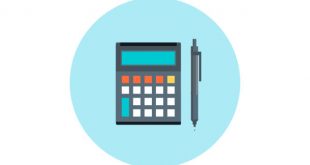 by Ela Erozan Gursel
by Ela Erozan Gursel
The year 2013 is coming to en end. How was the year for you? How did you feel about yourself? Accomplished or failed, happy or unhappy, hard working or lazy.
Every year-end I like to look back and write down what I have done, what opportunities I missed, what failures or mistakes… in sum, I want to find out what I can do better next year. This year I got an email from a Linkedin connection, Jeroen De Flander from the Performance Factory team. After reading what he wrote on a simple method to accomplish more next year, I was inspired. Instead of putting pressure on myself and accomplishing a 15 bullet to-do-list to accomplish more, I can just follow De Flander’s baby steps… and accomplish even more… Happy 2014!
Here is his letter:
For many of us, a new year is a new start. We have a long list of ideas and we’re full of gusto to make them happen. And off we go. We join the gym, start a diet or commit to spending more time with the kids. I’m no different. Every January I make my list. But getting things done is difficult. A British study of over 3,000 people showed that 88 percent break their New Year’s resolutions. A massive 4 out of 5 don’t follow through on their own great ideas. And they drop the ball after a few weeks.
Luckily, Peter Gollwitzer found a way to drastically increase our chances for success.
A few days before the Christmas vacation, Professor Peter Gollwitzer asked his students for help. He told them he was studying how people spent their holidays. And to get the necessary information, he asked them to write a report on how they spent Christmas Eve. To receive credits, it had to be written and emailed to the researchers no later than 48 hours afterwards.
In reality, Gollwitzer wasn’t interested in their holiday activities. He wanted to find out how people deal with goals when there’re lots of distractions. And what better way than to give a group of students an assignment with a tight deadline during their vacation?
One group of students didn’t get any more instructions and went off to celebrate their holiday. The second group got an extra questionnaire on which they had to fill in exactly when and where they were going to write the report in those critical 48 hours.
Now, just imagine you’re one of those students. You arrive home after a tough semester. It’s Christmas. You have time to catch up with family and friends. The fire’s lit, presents are under the tree, and there are home-cooked meals, a few drinks, and siblings to challenge you at a PlayStation game. Would you put these to one side to write your report?
The answer? If you wrote down a specific time and place to complete the paper, you probably would. Gollwitzer and his research team found that specific cues—what he calls ‘implementation intentions’—help individuals take action. In the experiment, the students from the second group had to write down the specific time and place they would write the report. For example, “I’m going to write my report before breakfast on December 26 in my old bedroom.” Of the first group, only 33 percent managed to complete the assignment on time. But of the individuals from the group that used implementation intentions—those that wrote down a specific time and place—75 percent wrote the report.
Hundreds of subsequent studies have since confirmed Gollwitzer’s findings. Specific cues to when and where you are going to take action have a positive effect on actually getting things done. Implementation intentions work. And they work particularly well when we face a difficult challenge. When we face an easy task, defining when and where we are going to do it increases its success rate by around 10 percent. But when we face a difficult challenge, using implementation intentions will increase our success rate by a whopping 300 percent. Implementation intentions triple our mileage on the execution road.
The tip: define clear implementation intentions for each challenging 2014 goal. It will drastically increase your success rate.
Happy holidays,
Jeroen De Flander and the performance factory team
 Turkish Labor Law
Turkish Labor Law



